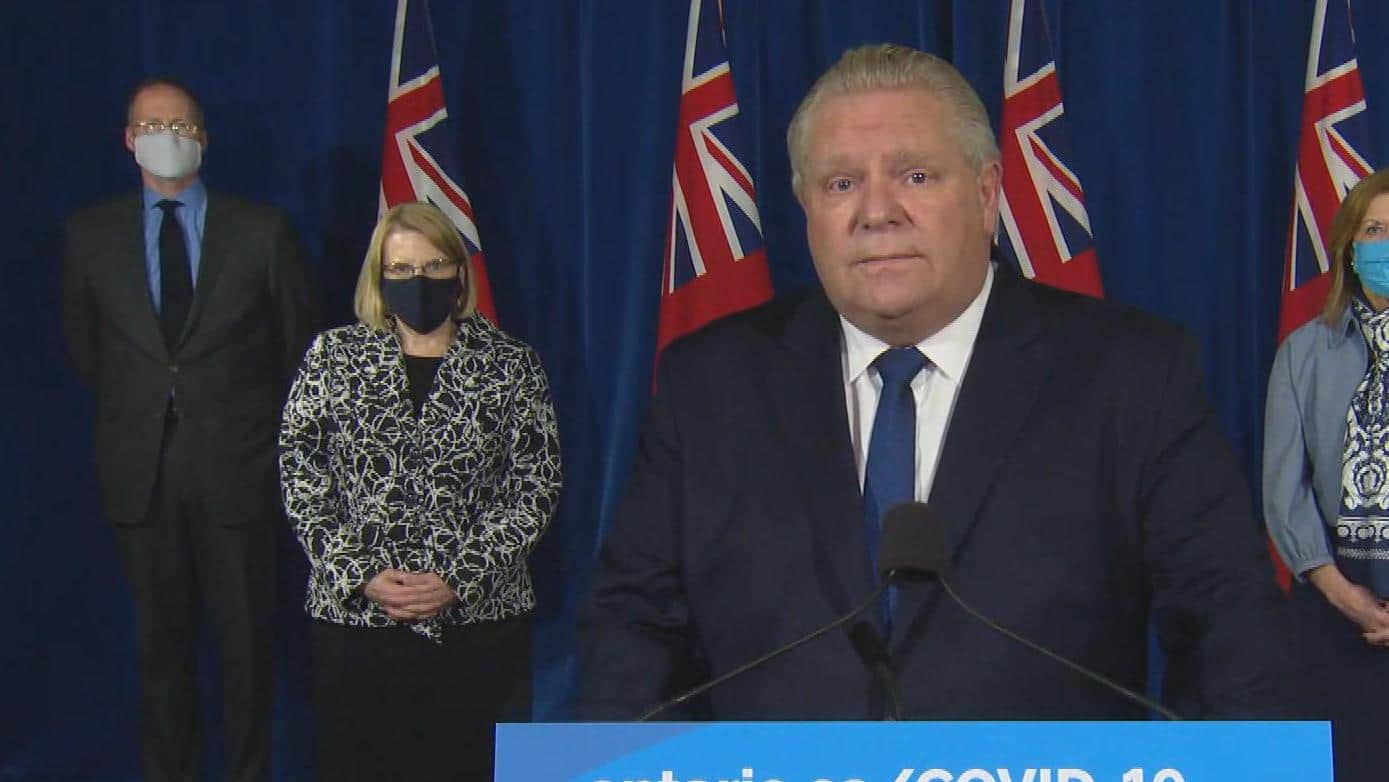The arrival of a COVID-19 vaccine in Canada was the first truly good news since the pandemic began nearly a year ago. But it was also a false dawn.
And that small glimmer of hope may have obscured the daunting challenge and the profound personal suffering that still stand between us and a new day.
So while the new year started with several days of fussing over how fast vaccine doses are being distributed, the announcement of new epidemiological modelling and new restrictions on businesses and individuals in Ontario yesterday should remind us that this pandemic is not yet under control and will not pass easily.
The recent back-and-forth between federal and provincial governments over vaccination began when the prime minister made his first public appearance of 2021 last week. At that point, the primary concern was the seemingly sluggish pace at which provinces were injecting the vaccine doses that the federal government had distributed; in Ontario, most vaccinations had paused for three days around Christmas. Trudeau said he was among those who were “frustrated to see vaccines in freezers and not in people’s arms.”
WATCH: Ontario Premier Doug Ford delivers grim pandemic update
Ontario Premier Doug Ford has declared an immediate state of emergency and will impose a stay-at-home order as of Thursday at 12:01 a.m., in an effort to curb surging COVID-19 cases, which threaten to overwhelm the province’s health system. 1:12
After picking up their pace, several premiers now insist that the problem might soon become one of supply. “We’re all hopeful the federal government will get us more vaccines,” Ontario Premier Doug Ford said last week. “Without them, hospitals will have to start cancelling appointments and all the progress we’ve made getting our daily vaccine numbers up will be lost.”
Over the weekend, Intergovernmental Affairs Minister Dominic LeBlanc said it was a “bit simplistic” for provinces to claim that they were in danger of “running out” of vaccine doses. But at a news conference in Edmonton on Monday, Alberta Premier Jason Kenney said his government was exploring the possibility of purchasing its own vaccine supply from manufacturers that currently don’t have a deal with the federal government.
“I want to be clear, this is not a blame game,” Kenney said — before suggesting that blame might ultimately be directed at the federal government. “But we’re just saying that Alberta’s health system has stepped up in a big way here and we need more doses, bottom line, it’s very simple.”

If there is a faster way for Canada to acquire 37 million doses of a COVID-19 vaccine, no one has explained it yet. And no one should have been under the illusion that vaccinating the entire population would happen quickly. But there is undoubtedly pressure on the Trudeau government to at least show that it is holding its own in the global vaccination race.
On both a per-capita basis and in terms of total vaccinations, Canada ranks tenth among the world’s 193 countries. Among the G7 nations, Canada’s rate of inoculation is fourth — behind the United States, the United Kingdom and Italy, but ahead of Germany and France. (Japan has not yet started to vaccinate its citizens.) The federal government is forecasting that vaccine shipments will continue to increase on a weekly basis through February and it continues to insist that a sufficient number of doses to cover every last Canadian should be available by September.
But seeing the end of the story is not an excuse to skip reading the pages remaining.
It’s not all about vaccines
“It’s incredibly important to vaccinate people at high-risk and health care workers very quickly, and from there everyone else,” Dr. Irfan Dhalla, vice president of Unity Health Toronto, said in an email on Tuesday morning.
“But we also need to do all of the other things we have been talking about since the beginning of the pandemic – testing, contact tracing, case management, monitoring self-isolation and quarantine, supporting people to stay home, communicating effectively in multiple languages and across multiple platforms, restricting travel, etc. If we focus exclusively on vaccination over the next few weeks, there’s no doubt that thousands of Canadians will die unnecessarily.”
Shortly thereafter, Premier Ford announced a new round of restrictions meant to protect a health system that he said is “on the brink of collapse.” The rate of infection in Canada’s largest province is already far above what it saw last spring. The curve has yet to bend and the question looming over the Ford government is whether it should have moved faster and further to restrict activity.
“Our province is in crisis,” Ford said yesterday afternoon.
According to new projections, Ontario’s daily case count could reach 10,000 by mid-February if the current spread continues. A new and more contagious variant of COVID-19 is now spreading. And while so much attention was being paid to the arrival of vaccines, another 198 residents of long-term care and two staff members have died already this year in Ontario — months after Ford’s government vowed to build an “iron ring” around such facilities.
Other provinces might take comfort in the fact that their second waves have been less dire, but surely no government can assume that the weeks and months ahead won’t be difficult.
In hindsight, some of the political attention that was paid to vaccination over the last month might have been better put toward the question of whether policies on paid sick leave were sufficient to meet this dangerous moment. While the federal government did introduce the Canada Recovery Sickness Benefit last fall, many say it wasn’t enough to encourage some Canadians in precarious jobs to stay home.
Last spring — when there was no vaccine in sight and the only concern was stopping the spread of COVID-19 — that issue might have been front and centre. Nearly a year later, political leaders are contending with much more public fatigue and impatience. And since the existence of a vaccine might help steel the public’s resolve to hunker down and accept new restrictions, political leaders might hold it out as a symbol of hope.
But the end of the story is not the story. The ultimate goal here isn’t just to ensure that every Canadian gets the vaccine. It’s also to ensure that as many Canadians as possible are still alive to get the shot.















Leave a comment